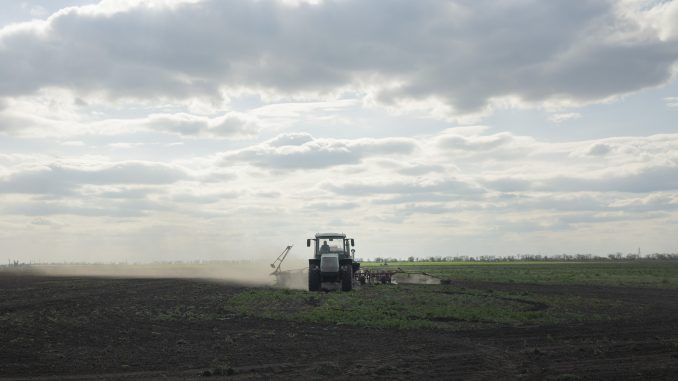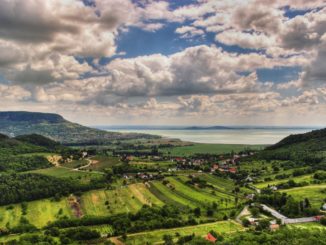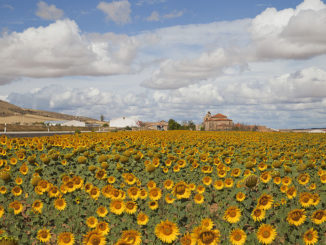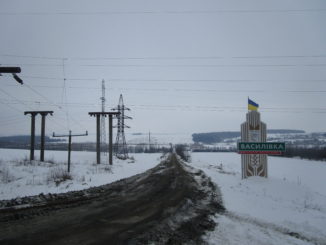
As labour shortages loom, the agricultural sector is preparing for yet another tough season, especially in countries like Hungary, Czech Republic and Slovakia. Some farmers and officials hope to alleviate this crisis with labour-capable Ukrainian refugees. But are these expectations realistic? As perceptions of Ukrainian labourers change, instead of stopgap solutions, more systemic change is needed, argues Péter József Bori.
Since the outbreak of the war in Ukraine, more than 4.5 million people have been forced to flee, seeking refuge in neighbouring European countries. As the conflict drags on and Russian forces wreak destruction, many have no choice but to settle more permanently in these countries. This has raised the hopes of farmers, who are increasingly unable to find the seasonal workers they need.
Indeed, labour shortages have plagued the agricultural sectors of many Eastern European countries for a number of years, especially after accession to the European Union ignited one of the largest brain – and labour – drains in the region’s history. As EU membership opened up the possibility of free movement, the economic gap between Western and Eastern Europe prompted many to find work abroad. The most affected areas were, of course, rural regions: areas which were already falling behind due to urbanisation and the growth of industrial sectors in the second half of the 20th century.
Even before the conflict in Ukraine began, in Hungary, a third of all agricultural enterprises and 40 percent of independent farmers were struggling to find the required labour for this year’s seasonal work. In the Czech Republic, nine out of ten agricultural businesses were missing workers, according to Agrární Komora, the group that represents the majority of the country’s agribusinesses. The story is similar in Slovakia in recent years, where the agri-food industry (represented by Slovenská Poľnohospodárska a Potravinárska Komora) speaks of shortages in both skilled and unskilled agricultural labourers. Tough working conditions, long hours, low wages, and generally better opportunities in manufacturing sectors are the strongest pull factors for workers leaving agriculture.
Changing perceptions of migrant workers
Countries like Hungary have for years attempted to fill this gap by attracting workers from further east. A number of recruitment agencies have specialised in providing businesses with guest workers (or ‘vendégmunkás’), often from neighbouring Ukraine and Romania.
But Hungary has a complicated relationship with these countries. After losing 2/3 of its territory following the First World War, large collectives of Hungarian minorities ended up living under the jurisdiction of these neighbouring states, igniting a historical grievance that has persisted into contemporary nationalist sentiments – especially in borderland regions. The sudden influx of foreign workers from these ‘historically hostile’ countries further complicated this situation.
As shown in Borbély’s study on foreign immigration in Hungary’s villages, the perception of seasonal Ukrainian labourers was similar to the perpetually discriminated Roma population. Quotes from villagers like ‘The Ukrainian is a nefarious Gypsy‘ signify to some extent the general perception of migrant workers in these regions.
In recent years, however, the government has introduced gradual changes that have made the employment of foreign workers easier and further increased their incorporation into the economy. Yet, this administrative simplification has not always been matched by better working conditions. Reports of below-standard living conditions, difficulty in accessing healthcare services (despite paying the required healthcare taxes) and language barriers indicate some of the difficulties faced by migrants in the past.
This perceived negative image of Ukrainians has seemingly gone through quite a radical change since the violent invasion of Ukraine by Russian forces. As Ukrainian refugees showed up at the Hungarian border, they were met with a newfound mentality of welcoming and valuing human life – somewhat contradicting Hungary’s hostile reaction to earlier instances of migration, such as the Syrian refugee crisis seven years earlier. In 2015 Prime Minister Viktor Orbán ordered the construction of a fence spanning Hungary’s southern borders; in 2022, he posed in photographs holding young Ukrainian refugees.
This general shift in mentality also trickled down (or up) to the job market. The government now provides financial support for companies who employ dual Hungarian-Ukrainian citizens and Ukrainian refugees with asylum seeking status. Some job portals have made job searching free for Ukrainians and made it significantly easier to go through the administrative process.
(Un)realistic expectations?
Yet, whether farmers will be able to benefit from these changing perceptions and simplified administrative processes is doubtful. Already before the outbreak of the war, Ukrainian workers were hard to come by, especially in agriculture. Higher wages and better living conditions in Western Europe have transformed Hungary into more of a transitionary state – a stepping stone for workers to move further West. In the last few years, foreign workers in the sector were primarily sourced from Asian countries like Nepal, Vietnam and India.
Some people I interviewed mentioned that they tried to reach out to refugees and offer them farm work, but that most of them were headhunted by large corporations offering better working conditions and higher wages. Countries further West and North have also opened their economies for Ukrainian workers. Germany is promoting thousands of jobs; Portuguese companies offer language training; and Lithuanian enterprises provide on-site child care for Ukrainian mothers. These factors mean that those who can, opt for choosing employment in sectors less demanding than agriculture or transit through Hungary to places with more promising working and living conditions.
Arguably, the solution to labour shortage in the agricultural sector should not be sought in crisis-induced ‘opportunities’. Rather, governments should reform the countryside to host better employment conditions that more closely resemble the needs of employees in the 21st century. They should step up against the ongoing land concentration that is driving diversified and innovative agricultural practices further into the peripheries of the sector. They should promote grants and schemes that truly help young farmers, instead of pushing them down into a vortex of debt and burn-out. And in the meantime, refugees fleeing war should not be used as political tools to improve one’s popularity rating.
More on Ukraine
War in Ukraine and World Food – What options does the international community have?
Where Soya has Scale – Ukraine, Big Ag and Land Concentration





